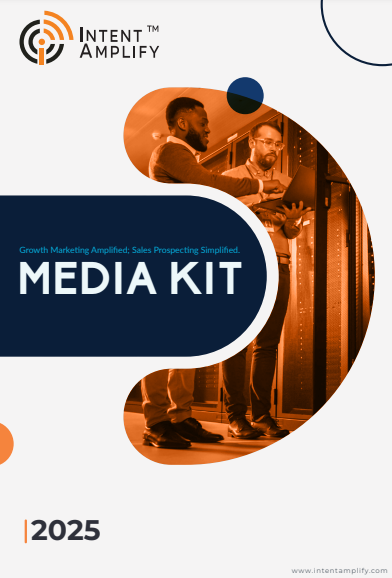
Types of Location-Based Marketing: A Complete Guide for B2B Marketers
- Last updated on: October 27, 2025
Location-based marketing was primarily a retail-focused strategy, but has nowadays become a major B2B growth lever. In fact, B2B buyers are constantly switching between digital and physical transactions. They can be going to conferences, taking business trips, visiting offices, and using business applications from various devices. All these points of contact provide numerous opportunities for accurate and context-driven engagement.
For B2B marketers, location data is more than just the physical position of a person. It represents a person’s intention, time, nearness, and also relevance. Brands, when using location data correctly and ethically, can easily become the solution for reaching the target customers who are most engaged and receptive.
On the other hand, a large number of marketers still associate location-based marketing with B2C only. However, the situation is completely different now. B2B companies employ such strategies to orchestrate ABM campaigns, promote events, implement regional sales strategies, engage in customer retention activities as well and raise brand awareness. This manual specifies different kinds of location-based marketing, their working procedure in B2B and the sector where they have the greatest impact.
Why Location-Based Marketing Matters in B2B?
B2B buying processes take a long time and require the approval of several people. It has always been difficult to contact the right people at the right time. Location signals are a great help in this respect. They indicate where the buying interest is most concentrated and where the engagement is most likely to lead to the pipeline.
The global market for location-based marketing services is estimated at USD 69 billion in 2025 and is set to reach USD 293 billion by 2035, growing at a 15.6% CAGR. This growth shows how location signals are becoming foundational in B2B demand generation and ABM planning.
By way of illustration:
- An organization that is present at an important industry event normally goes into a deep research mode immediately.
- The buying committee, which checks out the product comparison page from a certain region, might be signalling that they need to expand there.
- A factory that produces in a new area can be a sign that a vendor selection process is about to start.
Location information is a powerful tool that can be used to strengthen audience segmentation and help marketing work in tandem with the sales team’s territory plans. Marketers may use this tool for brand-level campaigns as well as for high-value ABM plays that require their utmost attention.
1. Geotargeting
Geotargeting is a method through which digital advertisements are presented to consumers depending on their physical location. The area of focus can be as broad as a country or as narrow as a single building. B2B marketers employ this method to make campaigns correspond with territory plans, event locations, or areas that have a lot of potential.
Example: Restrict your ads to only technology leaders who are within 20 miles of a major cloud computing conference. Thus, your communication will definitely get to the right people at the right time.
Geotargeting is highly efficient when working with:
- Regional account lists
- Territory-based sales teams
- Local partner or channel marketing
- Hyper-relevant event awareness
The main thing is to convey local messages instead of employing generic brand ads
2. Geofencing
Geofencing involves creating a virtual boundary around a location. Devices entering or leaving the boundary trigger advertising or engagement workflows. It is powerful for event-based B2B marketing.
Example: When target accounts walk into a trade show venue, they receive sponsored content, product videos, or meet-up invites.
Common uses:
- Conference and expo targeting
- Campus and corporate HQ targeting
- Field activation and roadshows
Geofencing works best when paired with strong follow-up, such as retargeting emails or sales outreach.
3. IP Address Targeting
IP targeting reaches users based on their organization’s network IP. It enables precise account-level advertising and aligns well with ABM.
Example: Showing display ads only to employees at Fortune 500 companies with active product research.
This method ensures:
- Minimal wasted ad spend
- Clear message relevance
- Higher engagement from known prospects
It is most effective when combined with intent data and account scoring.
4. Beacon-Based Marketing
Beacons are small wireless transmitters placed inside physical spaces such as event booths or corporate buildings. They send signals to nearby mobile devices when users opt-in. This helps drive micro-level engagement.
For example:
- Send booth check-in notifications during trade shows.
- Offer demo scheduling prompts near a partner pavilion.
Beacons create personalized touchpoints that help brands stand out in crowded event spaces. They support real-time engagement and higher on-site conversions.
5. Geo-Conquesting
Geo-conquesting targets audiences located near a competitor’s space or event. It helps brands win attention in highly competitive categories.
Example: If your competitor sponsors a major event, you can target attendees with comparison content or demo incentives.
This strategy requires thoughtful messaging. The goal is not aggression. It is differentiation and clarity of value
6. Location-Based Content Personalization
Location affects challenges, buying triggers, and decision criteria. Marketers can use location signals to serve personalized content. For example:
- Case studies relevant to the region.
- Solutions tailored to local compliance frameworks.
- Sales reps from the same region featured in messaging.
Personalization increases trust, and trust drives conversion in B2B environments.
How B2B Brands Use Location-Based Marketing in ABM Campaigns?
Account-Based Marketing focuses on high-value organizations and the people who influence purchasing decisions. Research shows that roughly 90% of marketers say that using location-based marketing resulted in higher sales. Location data creates insight into:
- Where decision makers travel
- Which industry events do they attend
- Where expansion or restructuring takes place
- When new facility openings suggest budget readiness
Location-based ABM campaigns often include:
- Event engagement workflows
- Localized display and LinkedIn ads
- Regional content landing pages
- Field marketing and strategic meetups
The goal is to show up at the right moment with relevant value.
Best Practices for Effective B2B Location-Based Marketing
Keep these principles central:
- Focus on context. Don’t target merely because you can; target when timing matters.
- Keep messaging clear and relevant to the event or region.
- Respect privacy and opt-in requirements. Transparency builds trust.
- Sync marketing and sales timing. Location insight supports better outreach sequencing.
Location alone does not create impact. Location aligned with intent and message relevance does.
Final Thoughts
Location-based marketing is no longer a retail gimmick. It is a strategic, data-driven method to engage B2B buyers in moments of high awareness and openness. Used well, it sharpens account focus, improves pipeline quality, and supports more meaningful engagement.
If your team wants stronger account-level engagement, especially around events or regional expansion efforts, this should be in your demand generation playbook.
Ready to Apply This Strategy?
If you want to connect with the right accounts at the right time, Intent Amplify® can help. We specialize in intent-driven ABM, omnichannel activation, and demand acceleration that converts interest into a qualified pipeline. Let’s build growth that scales. Visit: https://intentamplify.com/
FAQs
1. Is location-based marketing only useful for events?
No. While events are a strong use case, location signals help with ABM targeting, territory planning, and expansion strategy.
2. Is location targeting privacy-safe?
Yes, when used with compliant data sources and opt-in frameworks. Transparency is essential.
3. Can small B2B companies use location-based tactics?
Yes. Even small teams can run localized LinkedIn and display campaigns aligned with sales territories.
4. How do I track success?
Measure account engagement, onsite conversions, pipeline creation, and meeting bookings, not just clicks.




